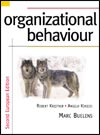 |
1 |  | 
Diversity is synonymous with differences. |
|  | A) | True |
|  | B) | False |
 |
 |
2 |  | 
Secondary dimensions of diversity contain an element of control or choice. |
|  | A) | True |
|  | B) | False |
 |
 |
3 |  | 
Work location represents an organizational dimension of diversity. |
|  | A) | True |
|  | B) | False |
 |
 |
4 |  | 
Workforce demographics are statistical profiles of the characteristics and composition of the adult working population. |
|  | A) | True |
|  | B) | False |
 |
 |
5 |  | 
Diversity is |
|  | A) | synonymous with similarities. |
|  | B) | synonymous with differences. |
|  | C) | composed of many different dimensions. |
|  | D) | driving white males from the job market. |
|  | E) | something that pertains only to women and minorities. |
 |
 |
6 |  | 
_____________ is (are) the centre, core layer of diversity. |
|  | A) | Primary dimensions |
|  | B) | Organizational dimensions |
|  | C) | Secondary dimensions |
|  | D) | Internal dimensions |
|  | E) | Personality |
 |
 |
7 |  | 
Secondary dimensions of diversity |
|  | A) | are salient to other people. |
|  | B) | exert an important and sustained impact throughout our lives. |
|  | C) | include, for example, ethnic heritage and age. |
|  | D) | contain an element of choice or control. |
|  | E) | are likely to evoke responses associated with biases, prejudices, or stereotypes. |
 |
 |
8 |  | 
Affirmative action programs have _________ effect on the job satisfaction of women and minority employees who supposedly benefited from them. |
|  | A) | a negative |
|  | B) | no |
|  | C) | a positive |
|  | D) | an emotional |
|  | E) | a pragmatic |
 |
 |
9 |  | 
Rachel was recently hired for a managerial position in a large high-tech firm. The organization has an active affirmative action programme, and Rachel thinks that the fact that she is female might have influenced the hiring decision. Rachel is likely to feel ___________ compared to employees selected solely on the basis of merit. |
|  | A) | less stress |
|  | B) | greater job satisfaction |
|  | C) | greater organizational commitment |
|  | D) | greater career satisfaction |
|  | E) | negatively stigmatised |
 |
 |
10 |  | 
The primary reason for managing diversity is to |
|  | A) | conform to legal requirements. |
|  | B) | attract a supply of qualified workers. |
|  | C) | treat everyone morally and ethically. |
|  | D) | allow everyone to feel appreciated and accepted. |
|  | E) | maintain a successful business in an increasingly competitive marketplace. |
 |
 |
11 |  | 
__________ is (are) a common barrier to implementing successful diversity programmes. |
|  | A) | Ethnicity |
|  | B) | Affirmative action |
|  | C) | Workforce demographics |
|  | D) | Illiteracy |
|  | E) | Resistance to change |
 |
 |
12 |  | 
R. Roosevelt Thomas, Jr. identified some basic responses for handling any diversity issue. The ________ option assumes that all diverse people will learn to fit in or become like the dominant group. |
|  | A) | assimilate |
|  | B) | suppress |
|  | C) | isolate |
|  | D) | tolerate |
|  | E) | exclude |
 |
 |
13 |  | 
According to diversity expert Ann Morrison, diversity practices fall into three main categories: |
|  | A) | expectations, expedience, and elaboration. |
|  | B) | deny, assimilate, and suppress. |
|  | C) | equilibrium, enrichment, enlightenment. |
|  | D) | accountability, development, and recruitment. |
|  | E) | isolation, tolerance, and inclusion. |
 |
 |
14 |  | 
___________ practices relate to managers’ responsibility to treat diverse employees fairly. |
|  | A) | Accountability |
|  | B) | Advancement |
|  | C) | Development |
|  | D) | Equitable |
|  | E) | Recruitment |
 |
 |
15 |  | 
__________ practices are necessary because most non-traditional employees have not been exposed to the type of activities and job assignments that cultivate effective leadership. |
|  | A) | Accountability |
|  | B) | Advancement |
|  | C) | Development |
|  | D) | Equitable |
|  | E) | Recruitment |
 |




 2002 A McGraw-Hill Online Learning Centre
2002 A McGraw-Hill Online Learning Centre